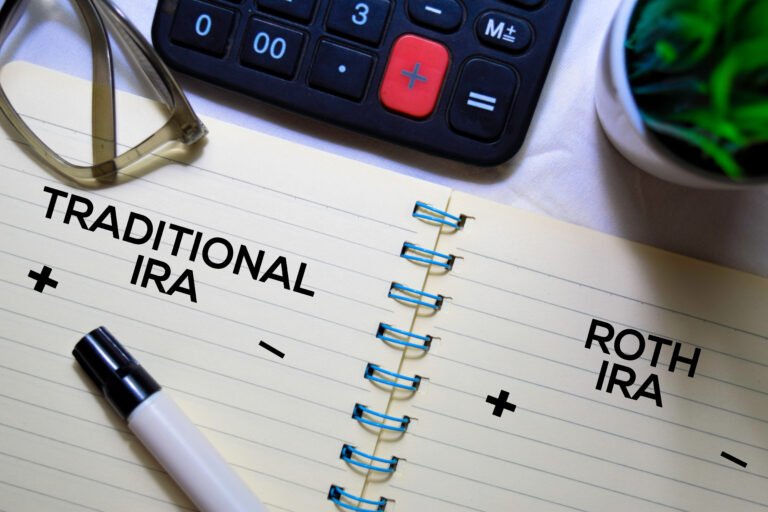Roth IRAs are a powerful way to save for retirement. The beauty of a Roth IRA is that all growth and withdrawals from the account are tax-free and having a tax-free income source in retirement can be extremely beneficial. It is important to keep in mind that any contributions to a Roth account will be taxed at your ordinary income tax rate for the year the contribution is made unlike traditional IRA’s contributions in which are deductible from your taxable income, but any withdrawals from the account are taxed at your ordinary income tax rate. In the ideal world, a retiree will have three buckets of assets to draw from: a tax-deferred bucket (traditional 401-k or IRA), a taxable bucket, and a tax-free Roth IRA bucket. Having tax-free income can be very important when it comes to minimizing your income tax and containing Medicare costs in retirement. Additionally, unlike traditional IRAs, Roth IRAs have no required minimum distribution (RMD) during the lifetime of the owner. Consequently, the entire amount in a Roth can eventually be passed down to a beneficiary upon death. So you can see that Roth IRAs have some attractive features.
Unfortunately, there is a catch for many investors. The ability to make a contribution to a Roth IRA depends upon your modified adjusted gross income. For 2018, the income phase-out range is between $120,000 and $135,000 for single filers and between $189,000 and $199,000 for joint filers. This means that you cannot contribute to a Roth IRA if your income exceeds the upper threshold of the phase-out ranges. Fortunately though, the backdoor Roth IRA is a strategy that allows you to get around these income limits and still take advantage of the Roth’s many benefits. With this strategy, you first make a non-deductible traditional IRA contribution, then convert it into a Roth IRA. Under current tax law, anyone, regardless of income, can convert existing money they have deposited into a traditional IRA to a Roth IRA. One can also roll as much money as they want from an existing traditional IRA into a Roth IRA, effectively eliminating the Roth IRA annual contribution limit as well.
When you do a backdoor Roth IRA, you will pay taxes on any amount you convert that has not already been taxed. If you have no other IRA money at the time, the taxable amount will simply be the growth in the account from the date of deposit to the date of conversion. The timing of the conversion is important. The Step Transaction Doctrine comes into consideration and basically says that a series of separate steps can be collapsed into a single step with the associated tax consequences applying to the single step. So, it behooves anyone trying to execute a backdoor Roth IRA conversion to wait at least 30 days after the non-deductible IRA contribution to do the Roth conversion.
Another important consideration to be aware of when executing a backdoor Roth IRA is the IRA Aggregation Rule. The IRA Aggregation Rule is explicitly only for IRA accounts; employer retirement plans like a 403(b) or a 401(k) are not included in this rule. Additionally, an inherited IRA is not aggregated together with an individual’s own IRAs, nor is a Roth IRA. When you convert a nondeductible IRA to a Roth, the IRS considers the conversion to first be a distribution of the non-deductible IRA and then a conversion of those funds to the Roth IRA. In this case, the only taxes owed would be on the small amount of growth that occurred in the IRA since the date of the contribution given the deposit was made with after tax funds. The IRA Aggregation Rule comes into play if you have money in traditional IRA accounts at the time you are converting your non-deductible IRA contribution. Using an example will best illustrate the impact of this rule:
Example: Assume Aaron is married and files a joint tax return. Between he and his spouse, they exceed the phase-out range for joint filers mentioned earlier and hence, Aaron is unable to make a Roth IRA contribution. He decides to go ahead and make a non-deductible IRA contribution of $5500 and then convert it to a Roth IRA using the backdoor Roth strategy. However, Aaron also has $175,000 of pre-tax IRA dollars when he “aggregates” together his SEP IRA and his two IRA rollover accounts. In this case, Aaron’s conversion is subject to the IRA Aggregation Rule and the tax consequences are determined on a pro-rata basis across all IRA accounts. Aaron’s $5500 non-deductible IRA is only 3.05% of his total IRA assets ($5500/$180,500) and the conversion will include only $168 of his nondeductible IRA (3.05% x $5500) and $5332 of pre-tax funds that are taxable at conversion! The existence of the pre-tax IRA assets has severely limited Aaron’s ability to do a backdoor Roth conversion.
If you do convert pre-tax assets to a Roth IRA, the taxable amount will count as income in the year that you convert the assets, so you need to pay close attention to your income tax bracket. You may want to consider converting no more than what you believe will bring you to the top of your current federal income tax bracket. You should also keep in mind that it is best to pay the tax liability owed on the converted assets with non-retirement assets so that you are not using any assets that are currently growing on a tax-deferred basis. If you have a year where your income is lower than usual, perhaps due to a lapse in employment or lower bonuses, this could be a good time to take advantage of this strategy.
Lastly, keep in mind that in order to make a non-deductible IRA contribution, you must have earned income that is equal or more than the amount you plan to contribute to the non-deductible IRA. Doing a backdoor Roth does require a little additional work but, if implemented on a consistent basis, this strategy can make a significant impact towards your retirement savings goals.
If you would like to learn more about setting up a Back Door Roth IRA, please contact us to arrange an introductory conversation.



